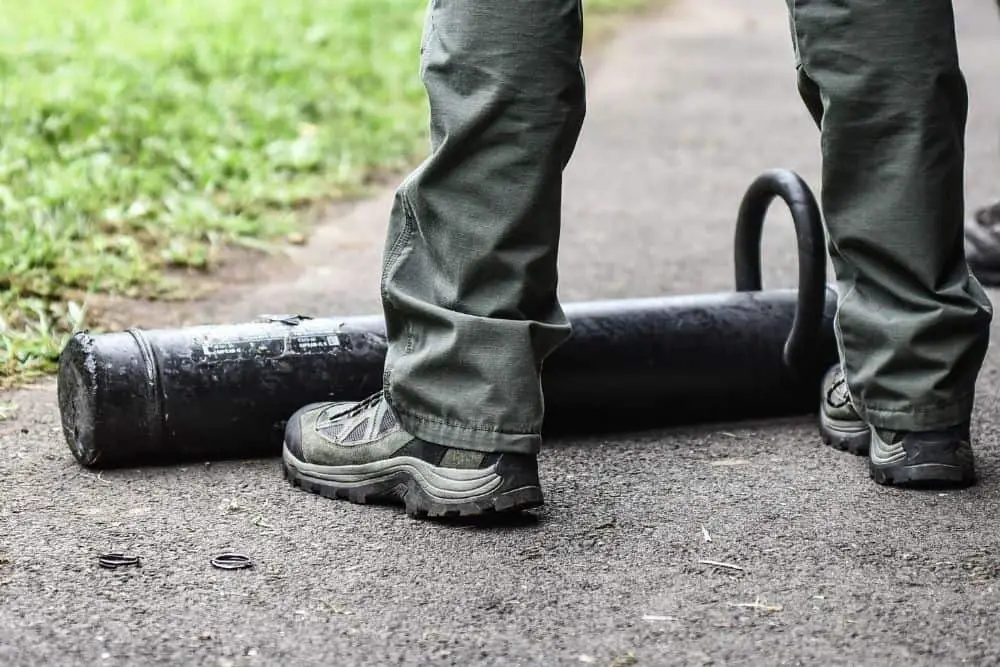Whether you are a fan of the Special Forces or someone with wild curiosity, this similar question has become frequently asked by many. Even before we found out why some Special Force agents choose hiking boots, we were pretty curious.
Anyways, many people who have asked “why do Special Forces wear hiking boots” have gotten direct answers through this post. So, this written post promises to answer all your questions about hiking boots and the Special Forces.
Nevertheless, as you read on, we would list all the reasons why Special Forces wear hiking boots. Then, we will state the tasks, conditions, terrains, and environments that Special Forces go through.
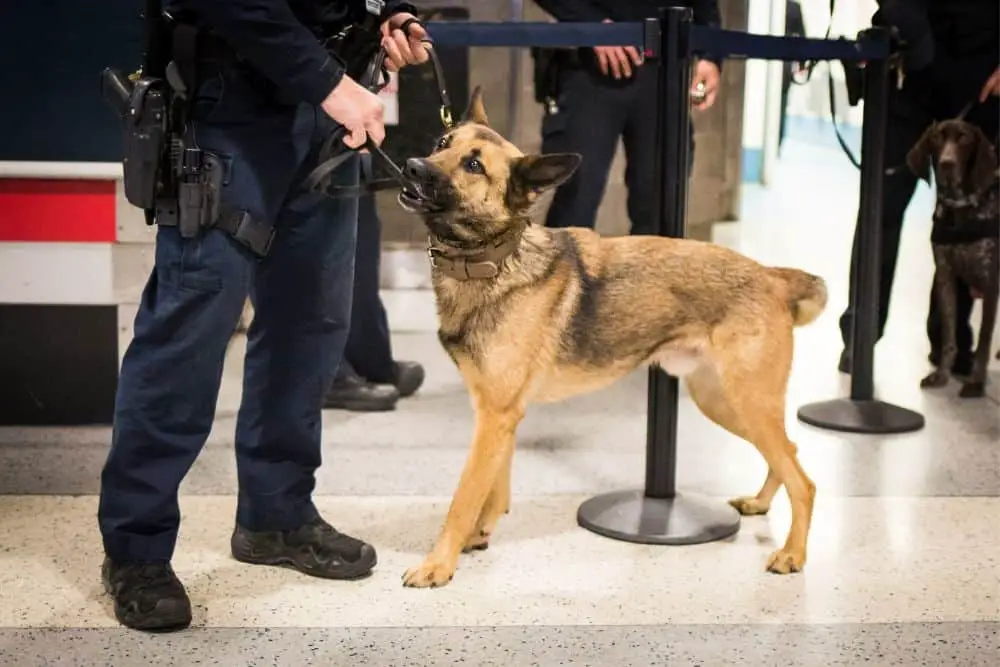
Contents
Why Special Forces Wear Hiking Boots?
Closely looking at the Special Forces activity, you would discover why many opt for hiking boots. Although this shouldn’t be the most prevalent boot for Special Forces in the wild, it is usually among their list of footwear.
So, the question remains, why? Why choose hiking boots when there are other options like tactical footwear. Well, if you know your hiking boots properly, you will discover that they possess numerous functions that help Special Forces when training or out on a mission.
Like you, we were curious about these functions and how excellent they must be to rank hiking boots high in terms of choice. So, let’s see some of the functions hiking boots perform that make them an option for Special Forces.
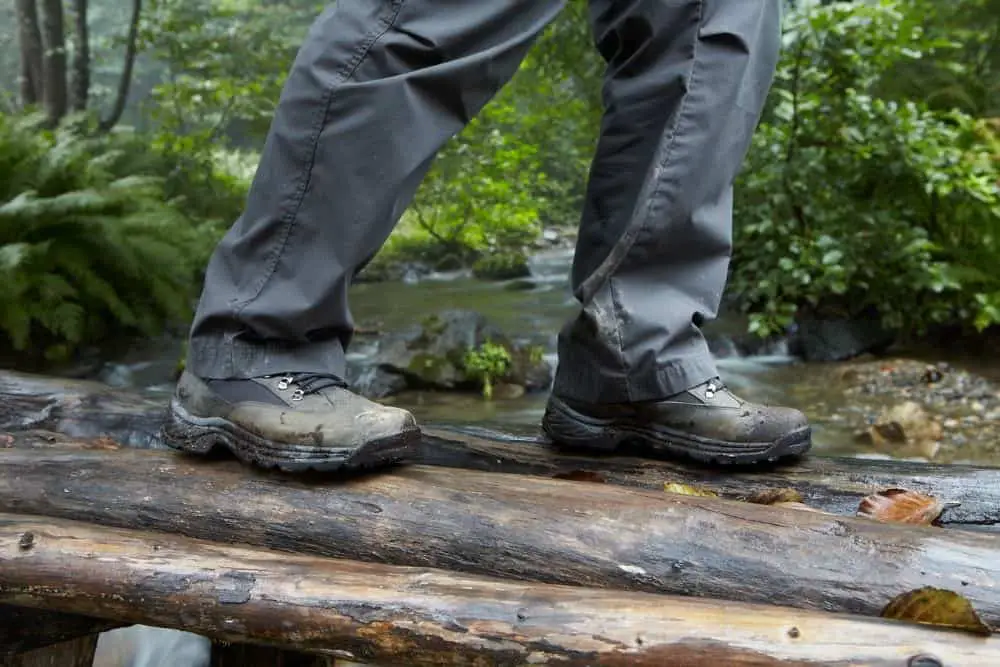
1. Traction or Slip Resistance
Honestly, you cannot dismiss the high traction or slip resistance provided by hiking boots. Whether you are on dry, sandy, or wet terrains, the traction provided by hiking boots is almost second to none.
This high traction comes from the solid but flexible outsole design of hiking boots. Generally, hiking boots come with a rubber outsole design, and this material has proven effective in providing high friction for the ground.
Plus, the construction of the outsole makes it more resistant to slips. How? Closely observing the outsole of hiking boots, you would spot uniquely scattered tread patterns and deep lug grooves across the entire length of the sole.
These tread patterns improve the friction already provided by the rubber outsole by gripping surfaces better. Then, the deep lug grooves prevent the build-up of fluid underneath the hiking boot to prevent falling easily.

2. Breathable Materials
Studying the Special Forces, you will see that their activities are pretty vigorous and intense. And unless the weather condition is on the freezing side (or it’s winter), there are high chances of sweaty feet arising, especially in the summer.
When performing any activity, sweaty feet could be one of the first signs of danger, even though it is normal. Performing the highly intense activity of the Special Forces with sweaty feet means that you will likely suffer foot-related health issues.
These breathable materials of hiking boots absorb or “wick” the sweat (or moisture) to the outside. However, not all hiking boots possess the most breathable material.
For instance, full-grain and split-grain leather perform subpar in being breathable materials. Whereas nubuck leather, Cordura, and Denier Nylon are the more excellent breathable materials of hiking boots.

3. Vented Holes and Eyelets
Similar to the breathable materials function, the vented holes and eyelets in hiking boots help to bring about foot dryness.
How? They allow air to flow into the hiking boot from the outside, which reduces the built-up heat within the footwear.
During the summer or hot weather conditions, Special Forces require their feet to be at an appropriate temperature, which hiking boots provide.
Additionally, the airflow that other footwear would likely prevent for Special Force agents, hiking boots tend to allow it, making it an appropriate choice.
4. Durability
Trust us; hiking boots are pretty durable, and it is among the top reasons why Special Forces choose them. And several features in hiking boots cause the high levels of durability they possess.
For instance, in the upper part, hiking boots have leather (full-grain, nubuck, and split-grain), synthetics (Denier Nylon and Cordura), and mesh. These are highly durable and possess long-lasting abrasion-resistant properties.
Then, the outsoles in hiking boots have a rubber build, which is a superior quality design. The rubber design has two types; blown and carbon. Carbon rubber is more solid and durable, which is why Special Forces tend to consider it more.
Besides, the sturdy construction of hiking boots ensures the stitching and glueing of the upper and outsole are of high quality. Manufacturers tend to use seamless construction designs that improve the waterproof capability of the boot, contributing to prolonging the footwear’s lifespan.
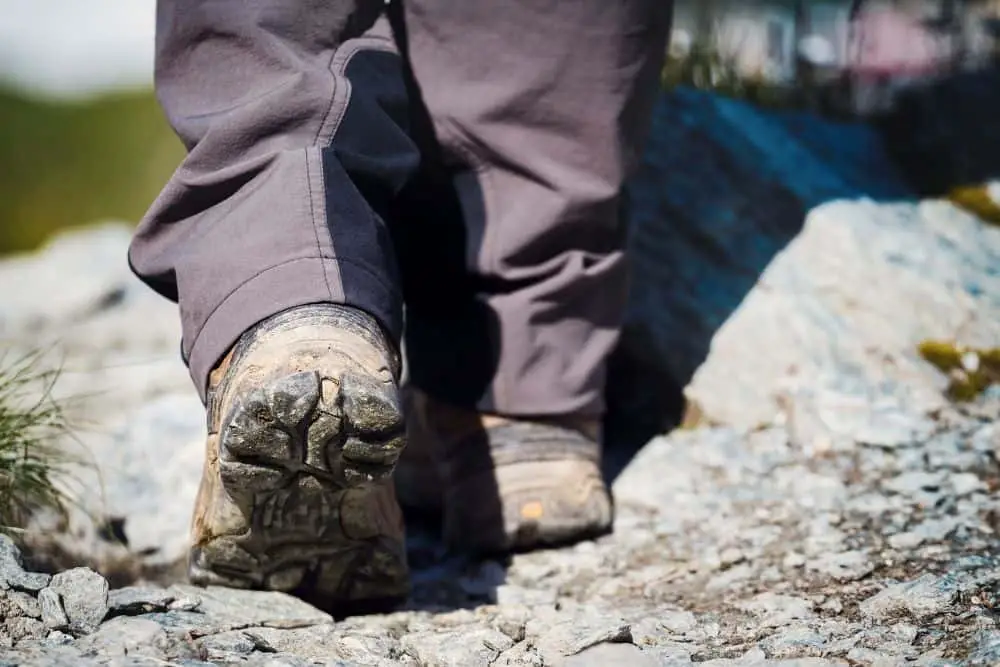
5. Comfortability
This is one of those top-selling functions of hiking boots for many users. That’s right, not only for Special Forces or hikers; more people like hunters value the comfort level provided by hiking boots.
The interior design of hiking boots molds the feet the right way to bring about comfort. Regardless of the specific terrain Special Force agents would be moving upon at the time; they require a high level of comfort for their feet.
Generally, the midsole design in hiking boots provides this high interior comfort. And it comes primarily from two sources; EVA or PU-type midsole designs. And both of them have a way of covering every angle of the feet to make it comfortable even on the most rugged terrain.

6. Waterproofness
This is a “must-need” function of any footwear for Special Forces. Why? Their training or activities will likely involve wet or muddy terrains, and for this reason, having a waterproof membrane in your shoe is essential.
Now, Special Forces choose hiking boots because of the long and reliable waterproof membrane they offer. However, unlike the insulating properties, the waterproofness of hiking boots tends to be unique to everyone.
This means that even the lowest category of hiking boots would have traces of waterproofness in them. And this waterproofness of hiking boots prevents water or any fluid from getting into the interior part of the footwear.
Primarily, the waterproofness of hiking boots comes from a membrane or lining that lies just below the upper material. However, it isn’t the only part of the footwear preventing water from getting in. The type of material in the upper of hiking boots also determines the level of waterproofness.
For instance, full-grain leather is among the best waterproofing materials for the upper; the only problem is that it tends to increase the overall weight of your hiking boot. Regardless, the Denier Nylon serves perfectly as a substitute as it has high waterproofing properties with less weight.
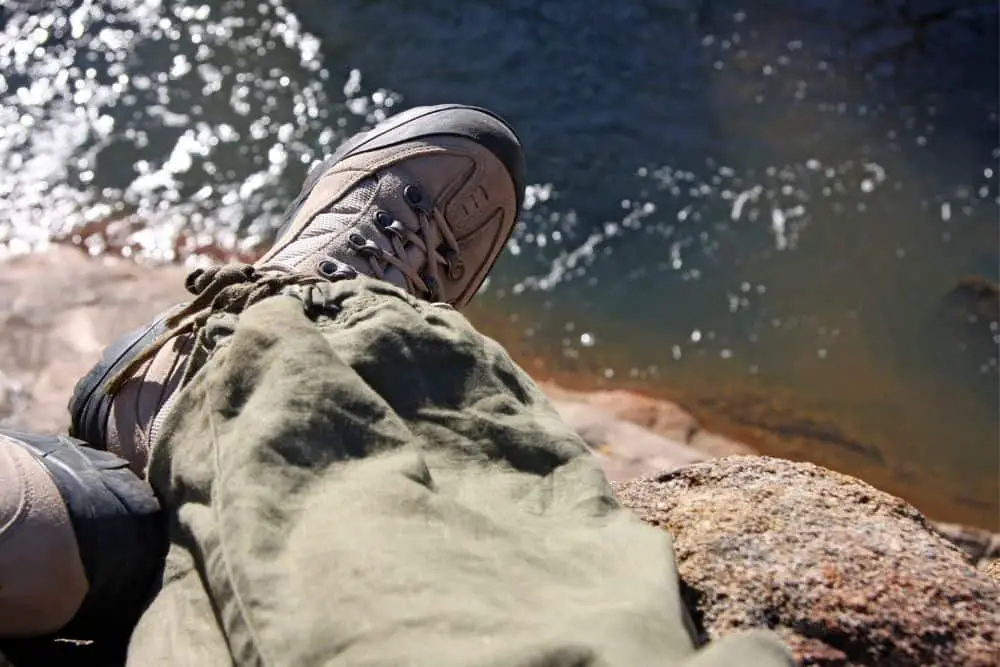
7. Lightweight Design
We believe hiking boots are one of the most lightweight footwear for the Special Forces. And if you have ever been with Special Forces agents, they would tell you that having lightweight boots is pretty essential.
The features or parts of hiking boots cause them to feel more lightweight than other footwear used by Special Forces. It doesn’t mean they completely lack some essential features; it just means that they have better, lighter substitute designs.
As earlier stated, in place of leather, some hiking boots tend to offer mesh or synthetic (Denier Nylon or Cordura) material, which are lighter. Then, in outsole material choice, rubber (blown or carbon) tends to offer better lightness and flexibility than other stiffer and more solid options.

8. Ankle Support
We won’t say hiking boots do best with this function; however, they offer good ankle support, especially the high-shaft ones. Hiking boots tend to be solid, and stiff, but soft in the ankle region, preventing easy twisting and turning.
However, not all hiking boots offer proper ankle support; in fact, some do not at all. But, the ones with ankle support (high and mid-cut collar hiking boots) tend to do it pretty well and in a superior quality manner.
10. Stability
When you consider the primary use of hiking boots, you will understand that they will probably offer the best stability on any terrain. However, when Special Forces agents go out on missions or for training, they want footwear that can keep them on their feet throughout an entire operation.
And you would agree with us that hiking boots do “stability” just perfectly. How? Just like other footwear used by Special Forces, hiking boots tend to come with shanks and plates, which boost stability, they only do it better because their primary purpose is for rough terrains.
The shanks help create a balance for your feet so that even when on uneven terrains, you almost feel like you are on a leveled surface. Then, the plates, which usually lie between the midsole and outsole, prevent protruding terrain objects from disrupting the balance.
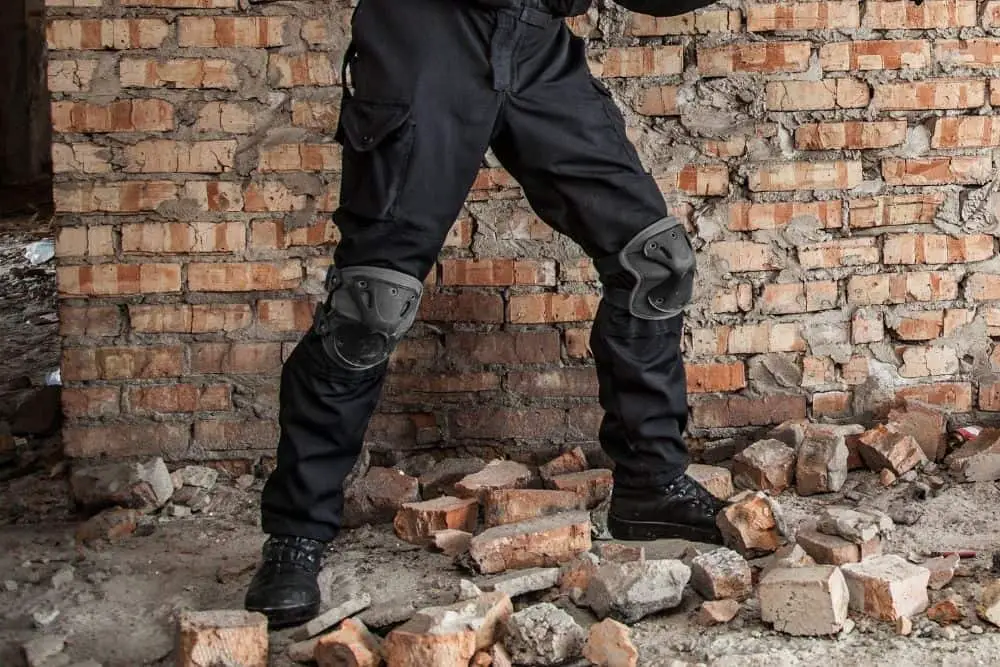
11. Protection
Let’s face it; Special Forces want highly protective boots, and hiking boots don’t truly offer the best. However, when they consider the other excellent features of hiking boots, their protection becomes enough.
For starters, other footwear like work boots will likely have steel toe caps at the front to prevent the heaviest foot collision. However, hiking boots come with only composite, rubber, and hard plastic toe caps.
Typically, this might seem not much, but honestly, it is just enough to protect your foot. The composite, rubber and hard plastic toe caps of hiking boots can withstand high collisions to the forefoot, preventing any collision that will likely want to damage your feet.
Then, the provided plates, shanks, midsole, and insole give hiking boots a shock-absorbing property. This function allows Special Forces to walk or run freely on rugged terrain without the shock of stepping on the ground going up to their feet.
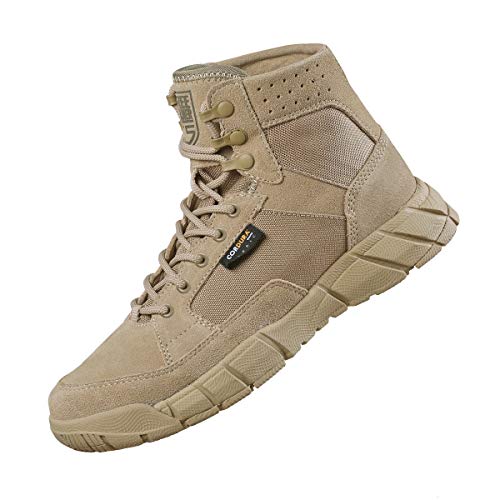
12. Insulation
Although this isn’t the most outstanding function most hiking boots manufacturers tend to put into this footwear, it is still an “okay” design, especially for Special Forces. For instance, Special Force agents might have missions or training sessions during freezing seasons.
When these Special Force agents consider the other excellent functions of hiking boots, the insulation provided becomes an added benefit. But, truthfully, hiking boots could do better with their insulating properties, especially in their mid-range versions.
You would mostly only find good insulating hiking boots as part of the costly ones. Most times, these would have 200 Grams of Thinsulate insulating properties, which is utterly still a good option for Special Forces agents with hiking boots in the winter.
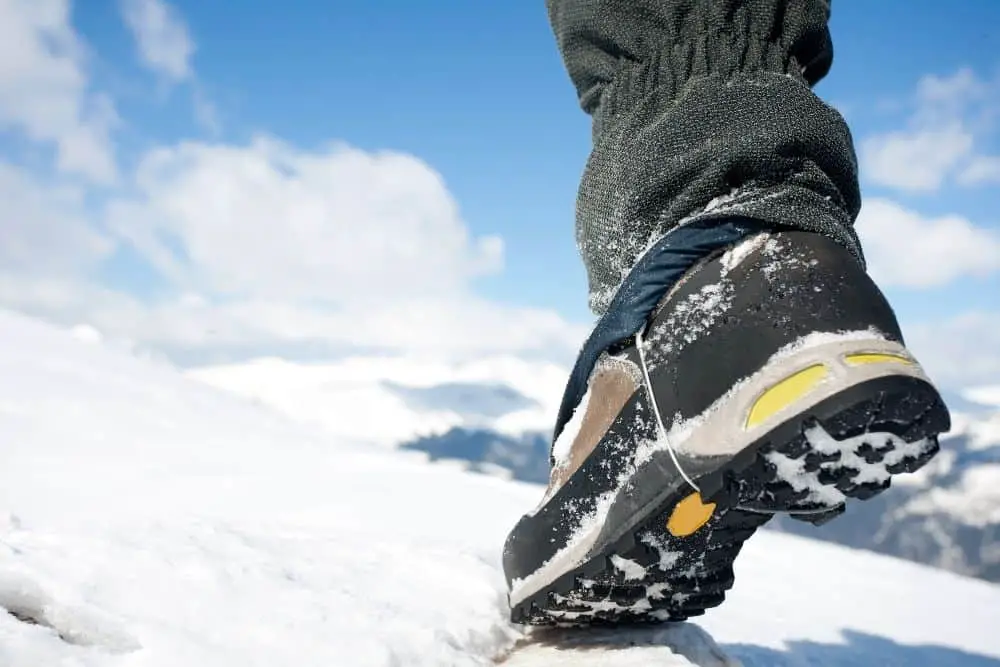
In-depth Analysis of Special Forces Need For Hiking Boots
Looking at the Special Forces and the activities they perform, it is almost clear even to the uninformed about their need for good and appropriate boots.
If you are still in doubt about why Special Forces need hiking boots, let’s see some of the areas requiring them.
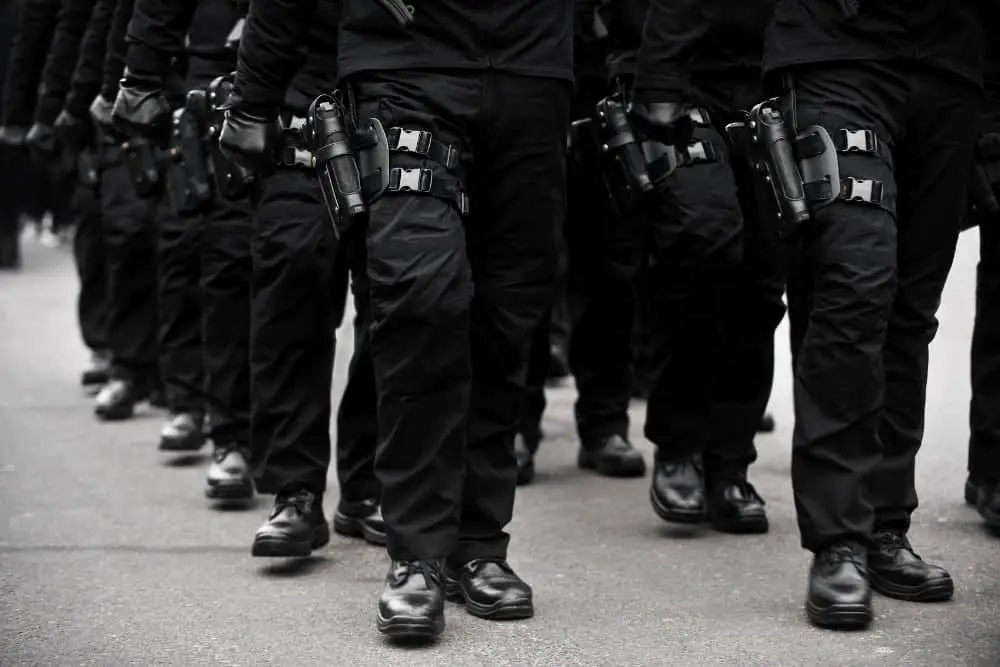
1. Tasks
The uniqueness of the organization determines the “tasks” performed by Special Forces. For instance, they could get involved in offensive raids, counterterrorism, and reconnaissance, all requiring sturdy and solid footwear.
The hiker’s boots act as high-performance footwear and provide all the unique features for land (smooth, rough, paved, or bumpy surfaces) by Special Forces. So, comfort, durability, protection, and lots more are sure for Special Forces agents with hiking boots.
2. Terrain
Depending on the particular training ground or mission, Special Forces would likely face different types of terrain. For instance, they would face rough, rugged, and probably uneven terrain if they raided arid lands.
For this reason, the stability provided by hiking boots through the shanks and plates becomes useful. Also, the high slip resistance ability will prevent Special Force agents from slipping on wet terrains.
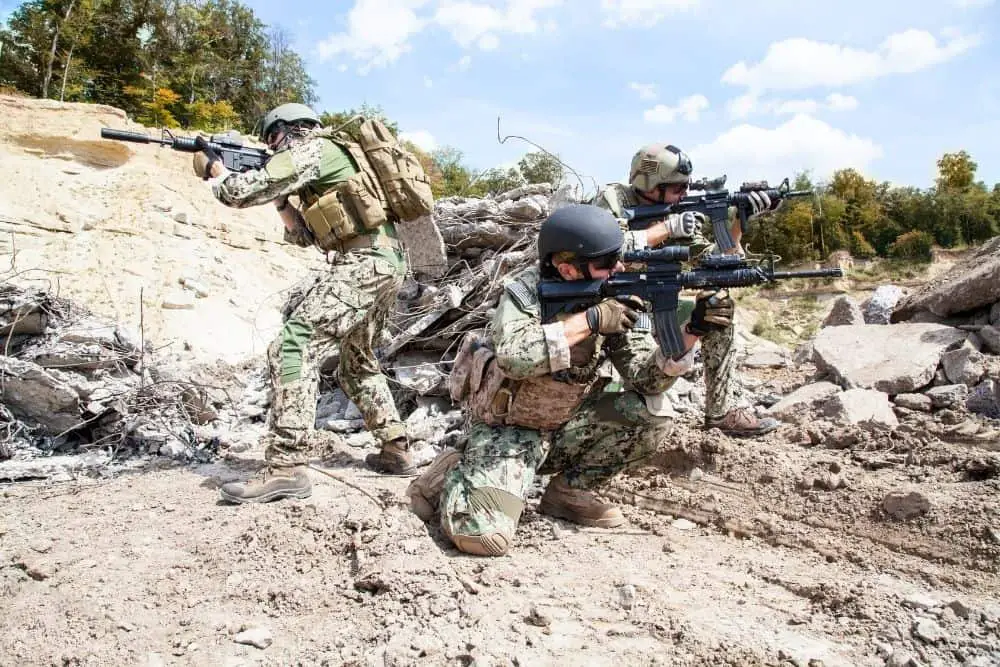
3. Conditions
Similar to our earlier statement, the nature of the condition Special Forces will experience depends on the specific mission. For instance, missions in natural environments will see them raiding hills, forests, volcanoes, or riversides.
Other missions could cause them to face artificial conditions like paved roads, building constructions, scrap areas, and any human-made location.
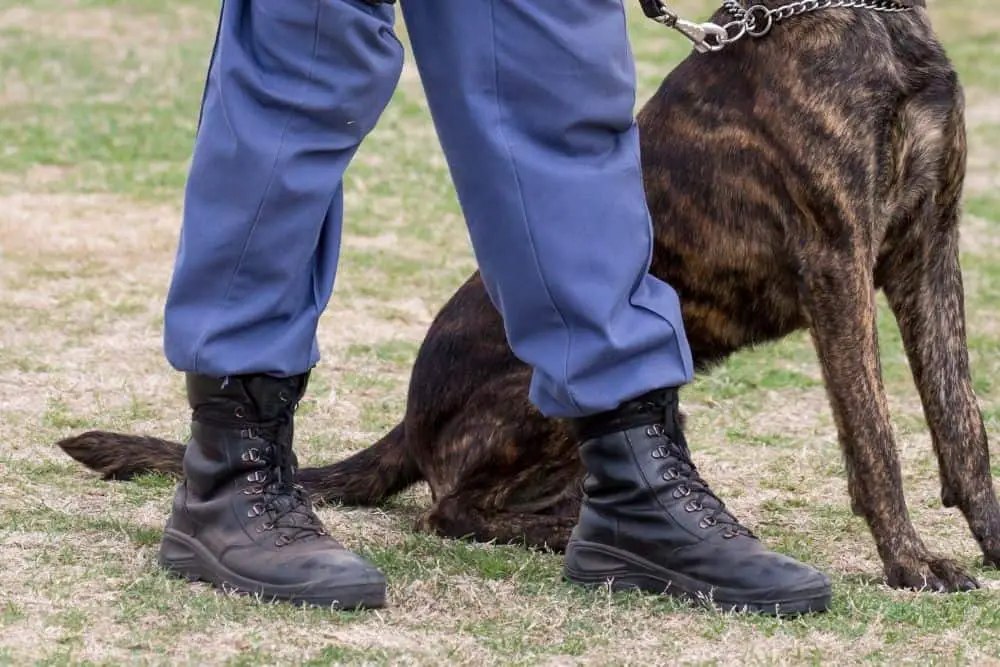
4. Environment
The weather conditions for Special Forces can never be stable because their training or mission could happen at different times. However, there are primarily four different seasons in a year they will likely face.
And these seasons include summer, winter, spring, and fall. Generally, the temperature varies in all these seasons; one minute it could be freezing, the other mild, and the next hot.
Nevertheless, the hottest season is often the summer which requires breathable hiking boots. But, then, the coldest season is usually the winter, which calls for hiking boots with some interior warmth or insulating properties.
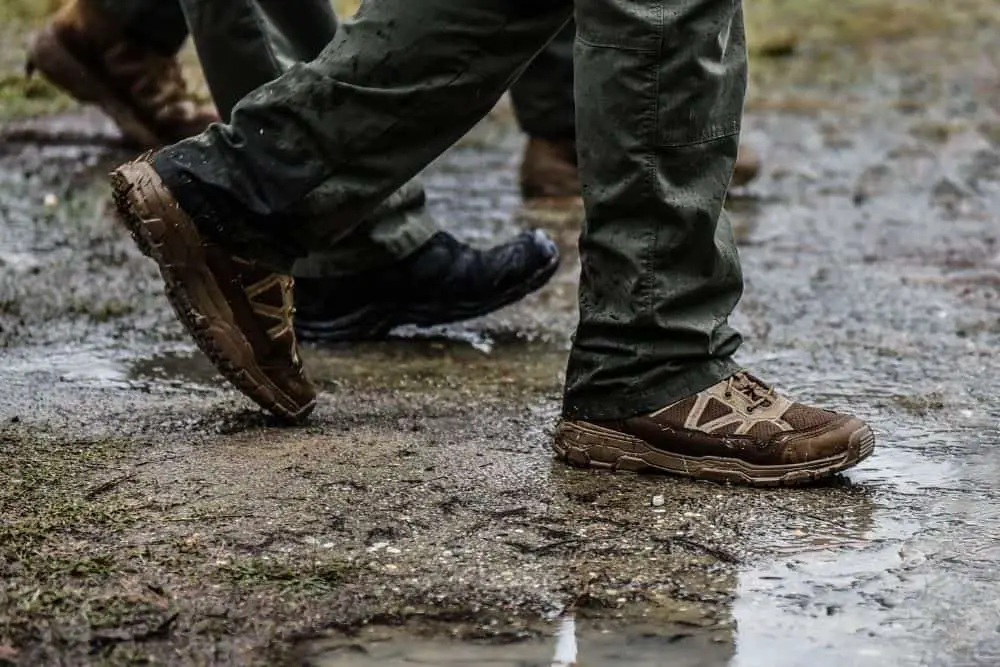
Standards of Special Forces Hiking Boots
Generally, the Special Forces are a unique league of agents specialized in different high-combat operations.
They endure training and engage in missions on several unfriendly and dreaded terrains that could damage their feet.
Nevertheless, there isn’t really an ideal “standard” for hiking boots used by Special Forces.
For this reason, we’ve searched for some hiking boots that highly recommend for Special Forces use. So, here are some well-constructed hiking boots brands for the Special Forces.
Last update on 2023-11-10 / Affiliate links / Images from Amazon Product Advertising API
Conclusion
Why do Special Forces wear hiking boots? Looking at the design of hiking boots, you will notice that several of its features serve as good functions for Special Forces in the field.
Nevertheless, we have revealed multiple reasons why Special Forces use hiking boots during training sessions and missions. Plus, we stated some officially approved hiking boot brands that are fit for Special Forces use.

